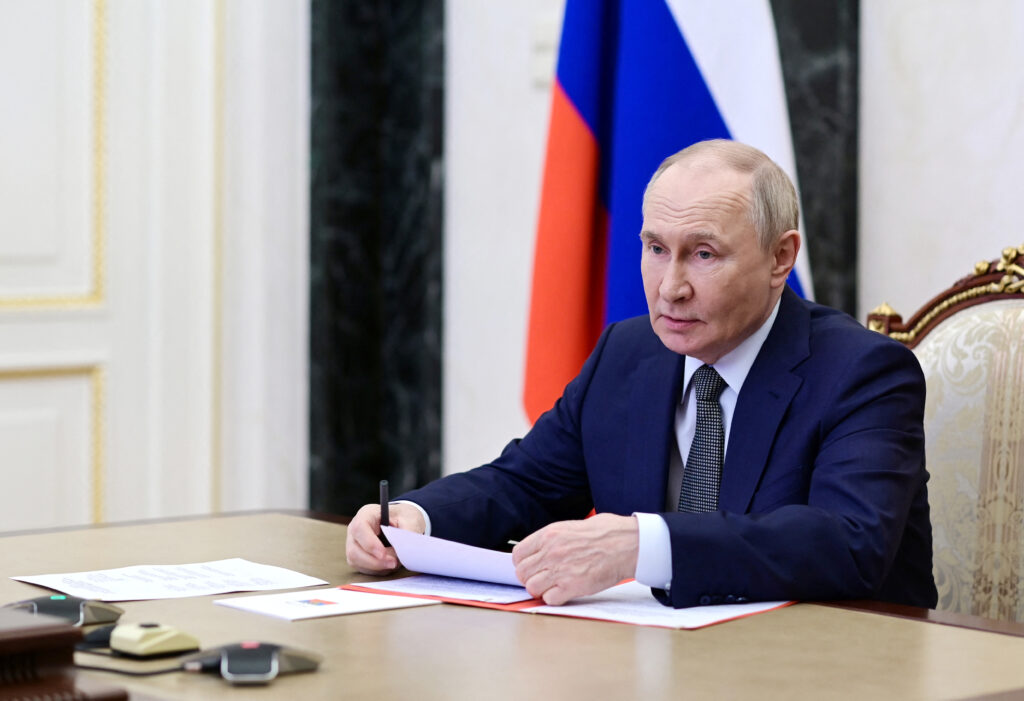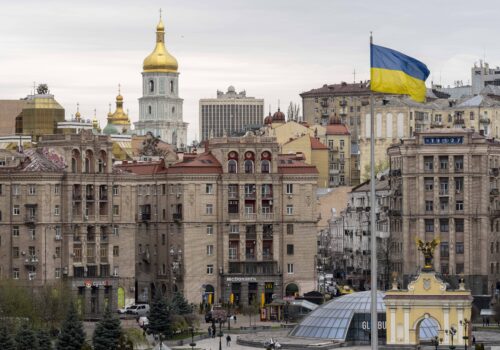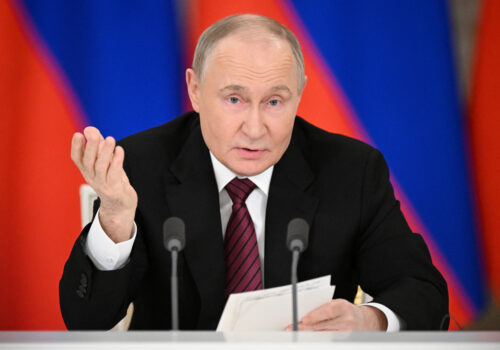This is the first in a series of regular assessments of the efforts, spearheaded by the Trump administration, to achieve a negotiated end to Russia’s war on Ukraine.
The results are now in from the first direct talks between Russia and Ukraine since the revelations of Russian atrocities in the Ukrainian cities of Bucha and Irpin three years ago. And one thing is clear: It remains Russian President Vladimir Putin’s aim to seize more territory so that he can achieve effective political control over Ukraine.
The talks were productive in the important but limited sense that the sides agreed to each exchange one thousand prisoners of war. But the parties took no steps toward an eventual end to the hostilities, as the Kremlin negotiators insisted that Ukrainian troops withdraw from areas of Ukraine that Moscow has “annexed.”
This is just the latest twist on the roller coaster that is the negotiating process to end Russia’s aggression against Ukraine. The Trump administration’s approach to a negotiated peace has required compromise from both Ukraine and Russia. Ukraine was asked to accept de facto Kremlin control of Ukrainian territory that Russia currently occupies and to put its aspirations for NATO membership on hold. Washington has asked Russia to accept the presence of European troops in Ukraine as a peacekeeping force and ongoing Western arms supplies to Kyiv to deter future Russian aggression. Ukraine has largely accepted these terms; Russia has not. Ukraine agreed without objection to the mid-March general cease-fire that the United States proposed, as well as the naval cease-fire in late March. Russia rejected both. Each side agreed to a cease-fire involving energy installations that same month, but Moscow violated it within hours.
The Trump administration’s approach through late April was hobbled by its unwillingness to put pressure on Moscow for rejecting the general and naval cease-fires, which contrasted with the severe pressure the US administration put on Ukraine after the difficult Oval Office meeting with Ukrainian President Volodymyr Zelenskyy on February 28. When Moscow refused the United States’ proposal for a naval cease-fire, the White House’s approach was to offer Russia more carrots, which prompted substantial criticism from Trump-friendly newspapers such as the Wall Street Journal and the New York Post, as well as from some Republicans on Capitol Hill. This tendency continued in late April as the White House proposed the truly damaging concession of recognizing Russian control of Crimea.
All of this changed—at least for the moment—when the United States and Ukraine inked the critical minerals deal on April 30. The deal included a paragraph in which, for the first time, the Trump administration mentioned the possibility of new US weapons going to Ukraine. It was no coincidence that at the same time, the White House separately approved two modest shipments of weapons to Ukraine. While the Trump administration did not stress this point publicly, the approval of the weapons shipments clearly complicated Putin’s efforts to take more Ukrainian land. It is worth noting that in response to criticism of its weak approach toward the Kremlin, the Trump administration has been talking for weeks about putting new sanctions on Russia. So far, however, it has not acted on these threats.
At the same time, Zelenskyy has been continuing to leverage his relationships with key European allies. He hit paydirt last weekend when the leaders of the United Kingdom, France, Germany, and Poland joined him in Kyiv to demand that Russia agree to a general cease-fire by May 12, threatening new sanctions if the Kremlin did not agree. Those leaders also called US President Donald Trump during their meeting and sought his support. He did not discourage them.
As circumstances grew unfavorable for him, Putin parried with a proposal for direct talks between Russia and Ukraine in Istanbul—a bid to delay progress on a cease-fire, avoid sanctions, and split Trump from the Europeans. At first, the gamble seemed to pay off. Zelenskyy immediately denounced the idea as a Russian stalling tactic and said Ukraine would not participate. But Trump reacted quickly as well; while skeptical that Russia wanted peace, he called on Zelenskyy to engage. Demonstrating his diplomatic nimbleness, Zelenskyy swiftly changed his mind and announced his intention to got to Istanbul.
This prompted a change of position in Moscow, with Putin announcing that he would not participate in the talks and Russian media criticizing the very concept of these talks—without mentioning that they were Putin’s idea. While Putin did not split off the Trump administration from Europe, his gambit did block the plans of Ukraine, Poland, France, the United Kingdom, and Germany to impose sanctions against Russia this week. And the instincts of the Trump team made that possible. After encouraging Zelenskyy to go to Turkey to negotiate, Trump provided cover for Putin’s cynical decision not to attend the talks. Trump said it was natural for Putin not to attend since, he, Trump, would not be there.
On Thursday, Trump declared that there will be no real progress toward peace until he and Putin sit down together. Trump may well be right about that—but only if he makes clear that if the Kremlin continues to reject reasonable compromises, the United States will send major new arms supplies to Ukraine and levy additional economic sanctions against Russia.
John E. Herbst is the senior director of the Atlantic Council’s Eurasia Center and a former US ambassador to Ukraine.
Further reading
Thu, May 15, 2025
Ukraine’s vibrant civil society wants to be heard during peace talks
UkraineAlert By
While officials in Moscow, Washington, Brussels, and Kyiv discuss technicalities and potential concessions, members of Ukraine’s vibrant civil society are attempting to define the contours of a lasting and meaningful peace, writes Ana Lejava.
Tue, May 13, 2025
How much longer will Putin be allowed to continue stalling for time?
UkraineAlert By Peter Dickinson
President Trump has made a legitimate effort to broker a generous peace, but the time has now come to acknowledge that Putin is not negotiating in good faith and will only respond to the language of strength, writes Peter Dickinson.
Thu, May 8, 2025
Russia’s coming summer offensive could be deadliest of the entire war
UkraineAlert By
As the US-led peace initiative continues to falter, the unfolding summer campaigning season in Ukraine promises to be among the bloodiest of the entire war, writes Mykola Bielieskov.
Image: Russian President Vladimir Putin chairs a meeting with members of the Security Council via a video link in Moscow, Russia, May 16, 2025. Sputnik/Pavel Byrkin/Pool via Reuters.




